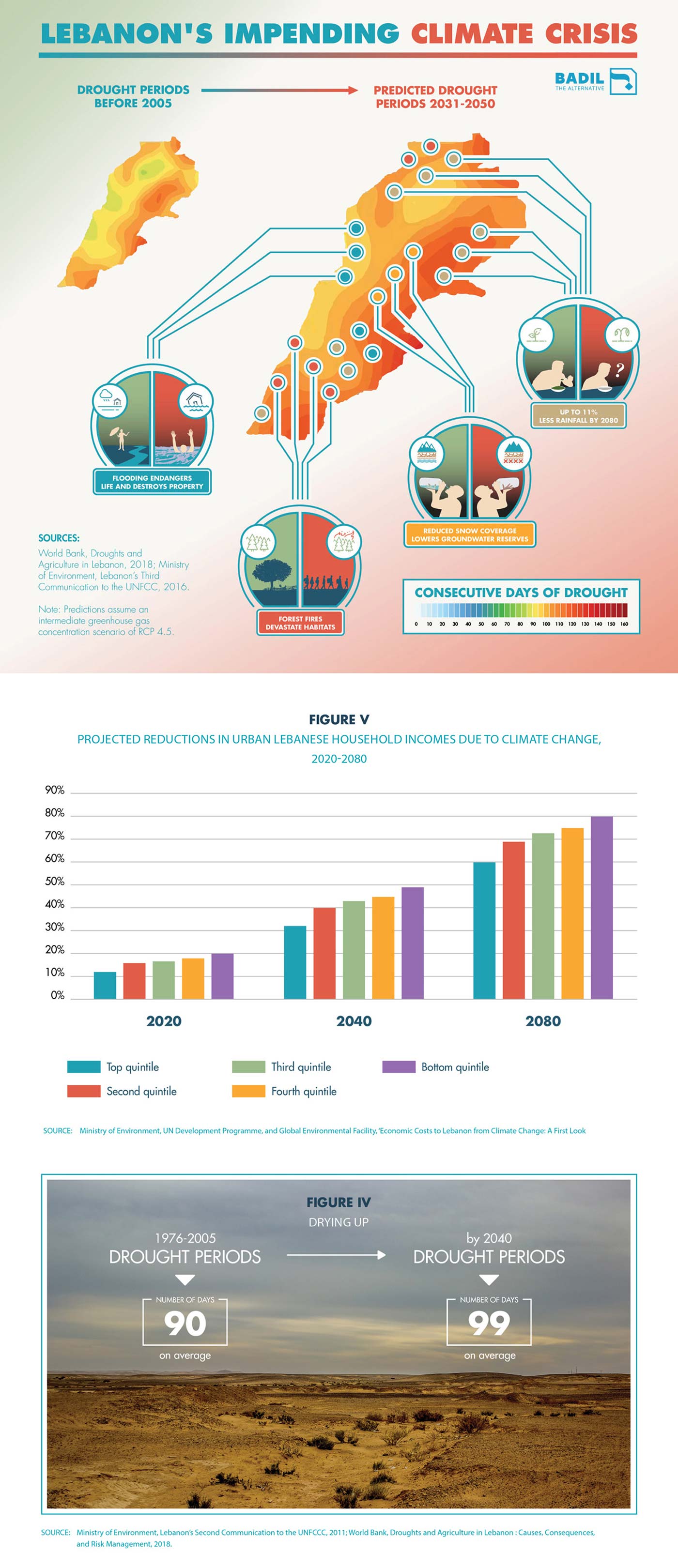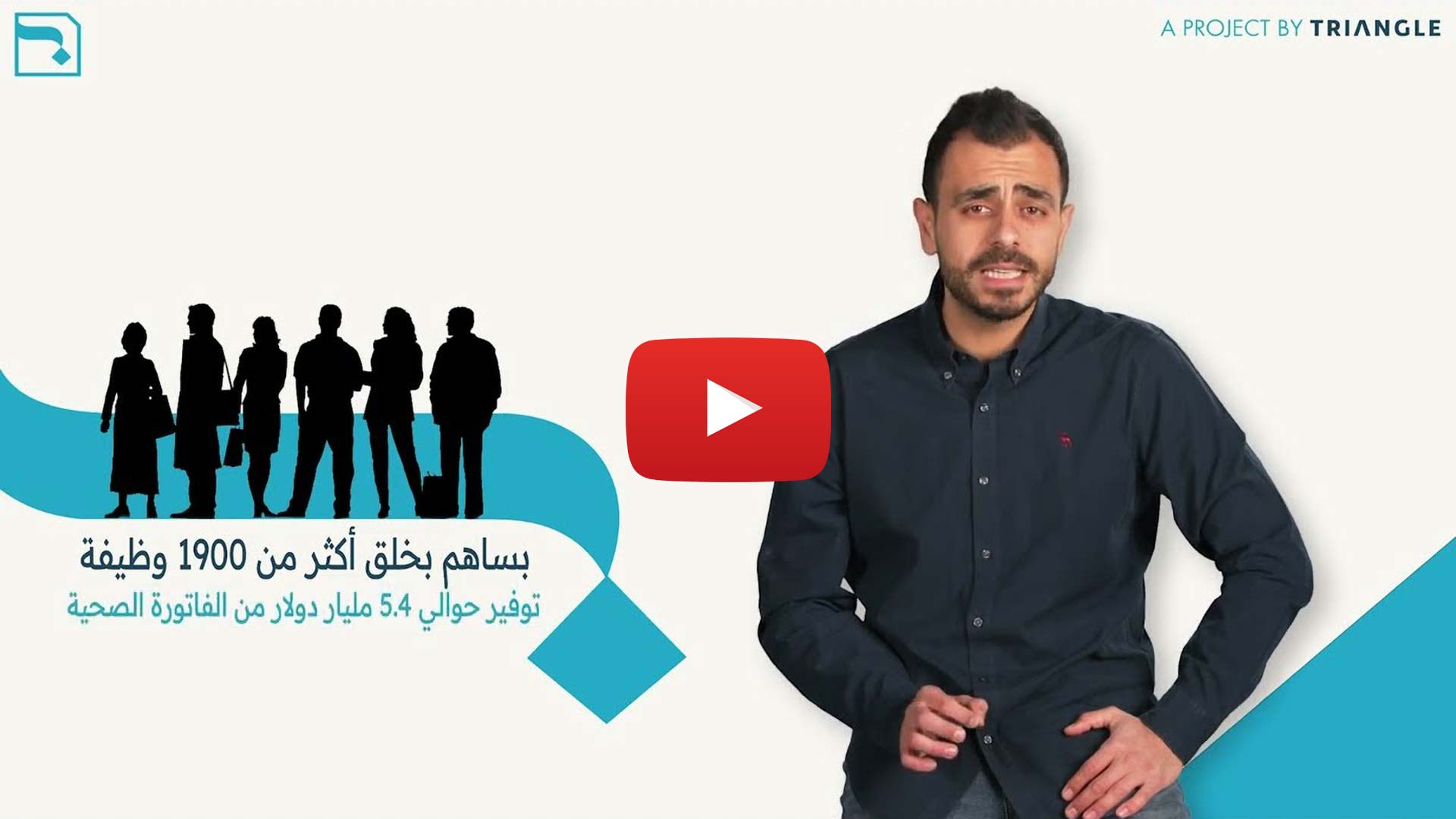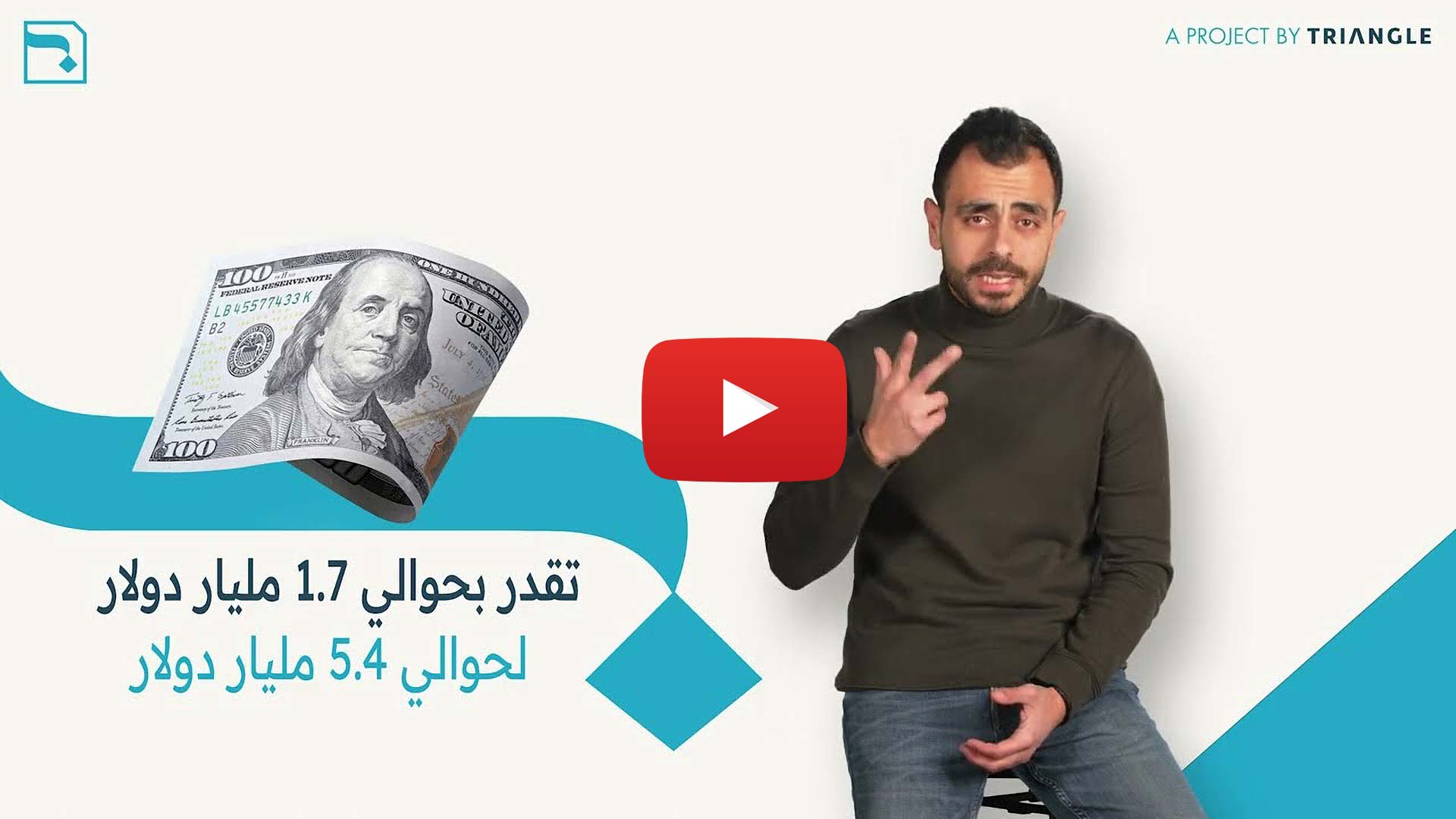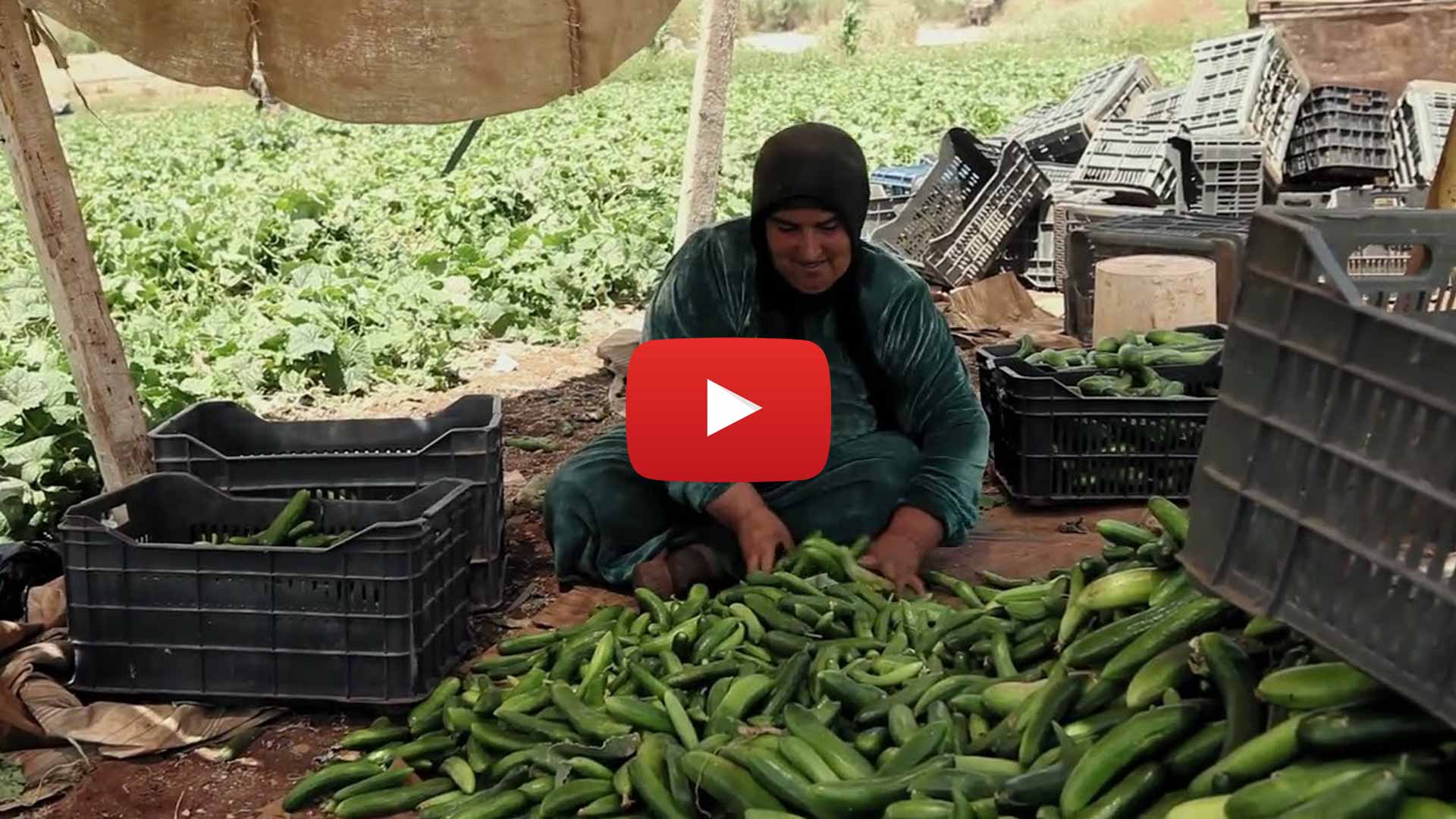Lebanese policymakers have also struggled to attract funding for climate adaptation policies from other sources. The UNDP team is trying to secure private sector investment for green projects through the ‘Lebanese Green Investment Facility’, which is expected to launch later this year. The World Bank is expected to pledge between $50 and $60 million to the Green Investment Facility– but it is unclear when this will materialise.41 Separately, municipalities could try to implement localised climate adaptation initiatives–if they had the capacity to raise funds independently. Yet under Lebanese law, municipalities are prohibited from attracting funding through fiscal means (principally, taxation) or through capital markets. As a result, municipalities remain highly dependent on central government funds through the Independent Municipal Fund (IMF) for development projects, which are often delayed, or simply not forthcoming.42
A second obstacle to crafting climate adaptation poli- cies is the absence of sector-specific data on how climate change is affecting key value chains. Lebanon suffers from a lack of reliable meteorological data, which pre- vents accurate early warning systems from being imple- mented. Lebanon’s only weather station is based at Raf- ic Hariri International Airport, which severely limits the Lebanese state’s capacity to monitor weather conditions. Meteorological blind spots leave policymakers groping around in the dark, often unable to warn farmers about extreme weather events such as heat waves, drought, or floods. In October 2019, the shortage of weather stations precluded the state from warning citizens about the high risk of forest fires breaking out. Curiously, Lebanon used to have weather stations operating in various locations, including at Al-Arz, Dahr Baidar, Houche-Al-Oumara, Ksara, Merdjayoun, Rayack, and Tripoli.43 Today, how- ever, none of these facilities appears to be operational.
Thirdly, Lebanon’s complete lack of a climate law–a legally binding framework for climate action–stymies climate adaptation. In other countries, climate laws compel governments to address climate change mitigation and adaptation. In the United Kingdom, for example, the 2008 Climate Change Act requires the British government to design and report on adaptation policies. The Climate Change Act also set up the Committee on Climate Change, an expert and politically independent committee that oversees climate change programmes in the UK.44 By contrast, Lebanon has failed to enforce even more circumscribed environmental laws. Most notably, the Environmental Protection Law requires that all new buildings undergo Environmental Impact Assessments. Yet of the first 100 projects assessed in the law’s first two years of implementation (2012-14), the Ministry of Environment rejected only one building application on environmental grounds.45
RECOMMENDATIONS
In general, climate change adaptation requires effective, centralised policymaking, which is typically undertaken by a central government. In other countries, the state has instituted and overseen climate adaptation policies, while also forming collaborative partnerships with key non-state actors, including the private sector and CSOs. Of course, Lebanon does not currently have a legitimate government in place, which naturally limits the potential of climate change adaptation policies for now. Accordingly, this report provides long-term recommendations (for after any new government that enters office) as well as interim recommendations, which offer practical guidance on steps that can be taken immediately.
INTERIM RECOMMENDATIONS
The international community must be prepared to fund grassroots climate activist organisations. Lebanon’s climate activists are badly underfunded and suffer from the perception that climate change is of secondary concern. Donors should demonstrate their commitment to climate change by funding local climate action and amplifying the efforts of Lebanese climate change activists through their own bilateral engagement with the Lebanese government and through media interventions.
Lebanon’s civil society organisations must lead demands for climate change adaptation. NGOs, schools, and research institutes should cry out for a green economic recovery, framing mitigation and adaptation programmes as job-creating, economically sound, and health-enhancing. This report has pointed to analysis conducted by the Lebanese government itself suggesting that ‘climate proofing’ projects will increase employment opportunities and reduce the future opportunity costs of climate change on the Lebanese economy. NGOs must take note and insist that the Lebanese government follows through with these recommendations, rather than allowing them to rot on the shelf. NGOs should pay attention to calls by Greenpeace MENA and the Arab Forum for Alternatives to consider a green and just recovery across the Arab world.46
Civil society organisations and educational institutions must include climate change adaptation in their work. Lebanon’s NGOs should take swift steps to understand how climate change will affect their activities, schools should embed climate change in their curricula, and academic institutes should prioritise climate change studies in their research agendas. Such action should not be limited to organisations that traditionally deal with environmental issues: migrants’ rights organisations, for instance, should investigate the impact of rising temperatures on migrant workers’ physical and mental health.
Civil society organisations must conduct quarterly national and local-level polling to make climate change a politically salient issue. Experience from other countries–the United States being one notable example–suggests that politicians pay attention to climate change when voters do. Lebanese citizens have indicated their concern for climate change in the past, and fresh polling data would give climate change policy the political boost that it needs.
LONG-TERMRECOMMENDATIONS
When any new Lebanese government enters office, it must pass a National Climate Law. In addition to committing Lebanon to zero GHG emissions by 2050 at the very latest, the law should oblige all public and private infrastructure projects to include ‘climate-proof’ climate change adaptation measures. The National Climate Law should significantly expand the Climate Change Coordination Unit within the Ministry of Environment, as well as establishing an independent Climate Change Oversight Committee. The committee should produce annual climate change adaptation and mitigation progress reports, which monitor the Climate Change Coordination Unit’s activities. The National Climate Law should also embed Nationally Determined Contributions, as recently updated, to ensure that Lebanon makes good on its green policy commitments.
Any new government must implement a National Green Recovery Plan—and ensure that it benefits Lebanon’s poorest the most. The government already has a playbook of 100 climate-proof infrastructure projects it could launch. Yet the likelihood of these projects being implemented remains uncertain because no overarching strategy exists for committing Lebanon’s economy to a zero-carbon future. Instead, the report includes worrying proposals for new fossil fuel power plants. The new umbrella strategy should address all emissions-producing sectors, including transport, power, buildings, agriculture, industry, and tourism. It should be devised in consultation with the Ministries of Environment, Agriculture, Water, Tourism, Transport, and Finance and be given legal weight by the National Climate Law. The Plan should benefit Lebanon’s poor and rural communities must benefit from these plans–for instance, by ensuring that smallholder farmers receive grants for drip irrigation–since they will be the most exposed to climate change shocks.47
Any new government must commission a set of detailed, independently assessed reports on climate change’s impacts on tourism, biodiversity, healthcare, water, and agriculture. Among these reports, the Ministry of Environment should conduct or commission a comprehensive analysis of climate change across all areas of Lebanon’s domestic tourism industry. Any such analysis should quantify the spending per visitor-day and the extent to which the benefit consumers enjoy per visitor-day exceeds what they spend (i.e. tourists’ ‘willingness to pay’, an essential element of economic analysis).48 The relevant line ministries should be prepared to adopt the recommendations of these reports as part of their multi-year strategies.
The government must also drastically expand Lebanon’s climate data collection capabilities, including meteorological infrastructure. At present, there is a glaring lack of publicly available weather data in Lebanon. It appears impossible, for example, to obtain reliable data on historical snowfall patterns in the country. Expanded weather station coverage would provide the Lebanese government with the data needed to make evidence-based interventions across all sectors affected by climate change, from agriculture to the tourism sector.
Any new government must also enable municipalities to independently levy green fiscal and monetary policies. Municipalities– already desperately underfunded and in need of economic stimulus–should be allowed to raise local environmental taxes and charges on environmental issues such as pollution, parking, and solid waste. Local municipalities should also have the option of independently seeking grants and concessional lending from multilateral development funds such as the Green Climate Fund and Global Environmental Facility.
Responsibility for addressing Lebanon’s climate crisis also rests with the international community. The Green Climate Fund, World Bank, International Monetary Fund, UN agencies and foreign embassies all have their part to play. To begin with, they must fund a comprehensive Lebanese National Climate Adaptation Plan. It is unacceptable–and, given that adaptation work needs local support to succeed, entirely counterproductive–that Lebanon cannot conduct a full NAP involving a national consultation process. External donors should commit to Lebanon’s climate-safe future by supporting the NAP’s development in Lebanon. The final NAP should provide for climate adaptation, while also transitioning Lebanese commerce to a circular, sustainable economy. This revamped system would incentivise innovative policies in areas such as agritech, green building design, and sustainable transport.
EDITOR’S NOTE
Triangle would like to express its heartfelt gratitude to all the economists, researchers, journalists, academics, and industry sources who anonymously contributed to this policy paper. The paper was compiled before the Intergovernmental Panel on Climate Change released its recent report (IPCC, 2021: Summary for Policymakers); all global climate change predictions made in this report thus build on previously available research.
This paper was compiled with the generous support of the Friedrich-Ebert-Stiftung (FES).
REFERENCES AND ENDNOTES
- https://www.bbc.com/arabic/middleeast-57696979. 2021, July عربي, 2 News BBC ’,لبنان – شبكة الفساد: تحقيق جديد عن قطاع الكهرباء في لبنان‘ Arabic, BBC
- For a comprehensive overview of specific climate change adaptation strategies, see ClimateWorks Foundation et al., ‘Shaping Climate-Resilient Development: A Framework for Decision-Making’, 2009.
- Ministry of Environment, GEF, and UNDP, ‘Lebanon’s Second National Communication to the UNFCCC’, 2011.
- This report acknowledges the recently published IPCC report (IPCC, 2021: Summary for Policymakers. In: Climate Change 2021: The Physical Science Basis. Contribution of Working Group I to the Sixth Assessment Report of the Intergovernmental Panel on Climate Change [Masson-Delmotte, V., P. Zhai, Pirani, S. L. Connors, C. Péan, S. Berger, N. Caud, Y. Chen, L. Goldfarb, M. I. Gomis, M. Huang, K. Leitzell, E. Lonnoy, J.B.R. Matthews, T. K. Maycock, T. Waterfield, O. Yelekçi,Yu and B. Zhou (eds.)]. Cambridge University Press. In Press.), which confirms the physical trends in regional climate change outlined in this report”
- All figures in 2015 inflation-adjusted US dollars unless otherwise Ministry of Environment, UN Development Programme, and Global Environmental Facility, ‘Economic Costs to Lebanon from Climate Change: A First Look’ (Ministry of Environment, 2015), http://climatechange.moe.gov.lb/viewfile.aspx?id=228.
- These losses are associated with the so-called representative concentration pathway (RCP) 5, a future world scenario produced by the Intergovernmental Panel on Climate Change (IPCC) that represents a business-as-usual scenario where countries do nothing to curb their emissions. If global emissions reduce, of course, the costs that Lebanon would incur both directly and indirectly could be significantly limited, but cannot be fully eradicated.
- UNDP, ‘Climate-Proofing Lebanon’s Development Plans’ (Beirut, Lebanon: UNDP, 2021).
- ‘Climate-Proofing Lebanon’s Development Plans’, Vivid Economics, accessed 19 June 2021, https://www.vivideconomics.com/casestudy/climate-proofing-leban– ons-development-plans/.
- ‘Climate Change, Economic Crisis Take Heavy Toll on Lebanon’s Honey Industry – Global Times’, accessed 2 July 2021, https://www.globaltimes.cn/page/202105/1224627. shtml; ‘List of Importing Markets for a Product Exported by Lebanon | Product: 0409 Natural Honey’, accessed 2 July 2021, https://www.trademap.org/Country_SelPro– ductCountry_TS_Graph.aspx?nvpm=1%7c422%7c%7c%7c%7c0409%7c%7c%7c4%7c1%7c1%7c2%7c2%7c1%7c2%7c1%7c1%7c2.
- Layal Abou Rahal, ‘Insect Pest Eats into Lebanon’s “white Gold” Pine Nut Trade’, AFP, 4 June 2021, https://www.france24.com/en/live-news/20210604-insect-pest- eats-into-lebanon-s-white-gold-pine-nut-trade; ‘Pins Du Liban : Ravages et Solutions’, L’Orient-Le Jour, 1 May 2017, https://www.lorientlejour.com/article/1049410/ pins-du-liban-ravages-et-solutions.html.
- Sarah Dadouch, ‘Climate Change Is Upending Lebanon’s Booming Business of Boutique Wineries’, Washington Post, 13 February 2021, https://www.washington- com/world/2021/02/13/climate-change-is-upending-lebanons-booming-business-boutique-wineries-provisional/.d
- These findings form part of an as-yet unpublished AUB study on climate change and its impacts on commercial value
- Halabi S & Ghanem N, ‘Rapid Market Opportunity and Value Chain Analysis for Small and Microenterprise Development of the Fisheries Sector in the Tyre Caza of Lebanon’, IUCN and ADR, https://www.iucn.org/sites/dev/files/content/documents/rapid_market_assessment_infographic_in_tyre_caza.pdf
- Nadim Farajalla et , ‘Climate Change in Lebanon: Higher-Order Regional Impacts from Agriculture’, Climate Change, 2014, 23.
- Farajalla et
- As of 15 July 2020, the S. dollar was trading at above 20,000 Lebanese lira. See: Ben Hubbard, ‘Lebanon’s Designated Prime Minister Quits Amid Swirling Crises’, The New York Times, 15 July 2021, sec. World, https://www.nytimes.com/2021/07/15/world/middleeast/lebanon-prime-minister-saad-hariri.html.
- Source: These figures are based on two assumptions relating to income per capita and income Mean annual gross national income per capita in Lebanon is assumed to be USD 8,500 in 2010, based on World Bank, (2015). “World Development Indicators: Size of the Economy.” http://wdi.worldbank.org/table/1.1). Sec- ond, income distribution is based on El-Laithy, Heba, Khalid Abu-Ismail, and Kamal Hamdan, (2008). Poverty, Growth and Income Distribution in Lebanon. http://www. lb.undp.org/content/dam/lebanon/docs/Poverty/Publications/Poverty,%20Growth%20and%20 Income%20Distribution%20in%20Lebanon.pdf). For a full explanation of how these income brackets were calculated, see Ministry of Environment, UN Development Programme, and Global Environmental Facility, ‘Economic Costs to Lebanon from Climate Change: A First Look’, 18.
- Guy J. Abel et al., ‘Climate, Conflict and Forced Migration’, Global Environmental Change 54 (1 January 2019): 239–49, https://doi.org/10.1016/j.gloenv- 2018.12.003.
- Aliaa Al Dirani et , ‘Exploring Climate Change Adaptation Practices and Household Food Security in the Middle Eastern Context: A Case of Small Family Farms in Central Bekaa, Lebanon’, Food Security, 26 June 2021, https://doi.org/10.1007/s12571-021-01188-2.
- The Pillar outlines measures for dealing with climate change adaptation, sustainable use of natural resources, efficient water uses and renewable energy in the agricultural See Ministry of Agriculture, ‘Lebanon National Agriculture Strategy 2020-2025’, 2020, http://www.agriculture.gov.lb/getattachment/Ministry/Minis- try-Strategy/strategy-2020-2025/NAS-web-Eng-7Sep2020.pdf?lang=ar-LB.
- UNDP, ‘Climate-Proofing Lebanon’s Development Plans’.
- Ministry of Environment, GEF, and UNDP, ‘Lebanon’s Second National Communication to the UNFCCC’.
- For an extensive investigation of Lebanon’s neglected water sector, see Karim Eid-Sabbagh and Alex Ray, ‘Breaking Point: The Collapse of Lebanon’s Water Sector’ (Triangle Consulting, 2021), https://secureservercdn.net/160.153.137.163/f62.e5d.myftpupload.com/wp-content/uploads/2021/06/Breaking-Point-The-Col- lapse-of-Lebanons-Water-Sector-1.pdf.
- Claudia Sadoff and Edoardo Borgomeo, ‘Beyond Scarcity: Water Security in the Middle East and North Africa’ (Washington, DC: World Bank, 2018).
- Ministry of Environment, UN Development Programme, and Global Environmental Facility, ‘Economic Costs to Lebanon from Climate Change: A First Look’.
- Gebran Bassil, ‘National Water Sector Strategy’.
- Author’s calculations based on UNDP, ‘Climate-Proofing Lebanon’s Development Plans’.
- Green Climate Fund, ‘Enhancing Climate Change Adaptation in the North Coast and Nile Delta Regions in Egypt’, Text, Green Climate Fund (Green Climate Fund, 6 November 2017), https://www.greenclimate.fund/document/enhancing-climate-change-adaptation-north-coast-and-nile-delta-regions-egypt; Green Climate Fund, ‘FP043: The Saïss Water Conservation Project’, Text, Green Climate Fund (Green Climate Fund, 6 April 2017), https://www.greenclimate.fund/project/fp043.
- Green Climate Fund, ‘SAP003: Enhancing Climate Resilience of the Water Sector in Bahrain’, Text, Green Climate Fund (Green Climate Fund, 20 October 2018), https://www.greenclimate.fund/project/sap003.
- Ministry of Environment, GEF, and UNDP, ‘Lebanon’s Second National Communication to the UNFCCC’; Amin Shaban et , ‘Influence of Snow Cover on Water Ca- pacity in the Qaraaoun Reservoir, Lebanon’, Arabian Journal of Geosciences 14, no. 1 (6 January 2021): 10, https://doi.org/10.1007/s12517-020-06295-6.Lebanon\\ uc0\\u8217{}, {\\i{}Arabian Journal of Geosciences} 14, no. 1 (6 January 2021
- Ministry of Environment, UN Development Programme, and Global Environmental Facility, ‘Economic Costs to Lebanon from Climate Change: A First Look’,
- Lebanon Ministry of Environment, ‘Lebanon’s Third National Communication to the ’, 135.
- الجمهورية اللبنانية – وزارة اﻹعالم – الموقع الرسمي لمتابعة أخبار‘ Health, Public of Ministry at: available Data 7,832. was deaths related COVID-19 of number the 2021, June 23 On https://corona.ministryinfo.gov.lb. 2021, July 1 accessed ,فيروس الكورونا في لبنان,‘ كورونا في لبنان
- A. McGeehin and M. Mirabelli, ‘The Potential Impacts of Climate Variability and Change on Temperature-Related Morbidity and Mortality in the United States’, Environmental Health Perspectives 109 Suppl 2 (May 2001): 185–89, https://doi.org/10.1289/ehp.109-1240665.{\\i{}Environmental Health Perspectives} 109 Suppl2 (May 2001)
- Aidan Farrow, Kathryn A Miller, and Lauri Myllyvirta, ‘Toxic Air: The Price of Fossil Fuels’ (Greenpeace MENA, 2020).
- Lebanon Ministry of Environment, ‘Lebanon’s Third National Communication to the ’, 2016.
- Ministry of Public Health, ‘Health Strategic Plan: Strategic Plan for the Medium Term (2016 to 2020)’, 2016, https://www.moph.gov.lb/userfiles/files/%D9%90An– nouncement/Final-StrategicPlanHealth2017.pdf.
- Khalil Kanani et , ‘National Climate Change Health Adaptation Strategy and Action Plan of Jordan’, 2012, 259.
- Author’s calculations based on Heinrich Böll Stiftung, ‘Climate Funds Update Data Dashboard’, accessed 18 June 2021, https://climatefundsupdate.org/data-dash- board/themes/.
- While no draft of the NAP exists in the public domain, its existence was confirmed by an expert familiar with the drafting
- Based on discussions with subject matter experts. See: World Bank, ‘Establishing a Green Investment Facility – Lebanon’, accessed 2 July 2021.
- Sami Atallah et al., ‘Restructuring Subnational Governance in Lebanon: Towards Efficient Public Spending and Reduced Regional Inequalities’ (Beirut, Lebanon: Democracy Reporting International, 2020).
- ‘Weather Data for Lebanon’, accessed 1 July 2021, https://geographic.org/global_weather/lebanon/index.html.
- Expert, ‘Climate Change Act 2008’ (2008), https://www.legislation.gov.uk/ukpga/2008/27/contents
- /.قانون-حماية-البيئة-في-لبنان-تشريع-رمزيhttp://www.legal-agenda.com/ 2014, October 6 (blog), Agenda Legal ’,قانون حماية البيئة في لبنان: تشريع رمزي يتخبط بين المصالح السياسية وضعف اﻹدارة
- ‘Greenpeace MENA and Arab Forum for Alternatives Announce Team Up to Promote the Discussion of a Green and Just Recovery in the Region’, Greenpeace MENA, accessed 2 July 2021, https://www.greenpeace.org/mena/en/greenpeace-mena-and-arab-forum-for-alternatives/.
- Stéphane Hallegatte et al., ‘Shock Waves: Managing the Impacts of Climate Change on Poverty’ (Washington, DC: World Bank, 2016), https://openknowledge. org/bitstream/handle/10986/22787/9781464806735.pdf?sequence=13&isAllowed=y.DC: World Bank, 2016
- Lebanon Ministry of Environment, ‘Lebanon’s Third National Communication to the ’, 136.









